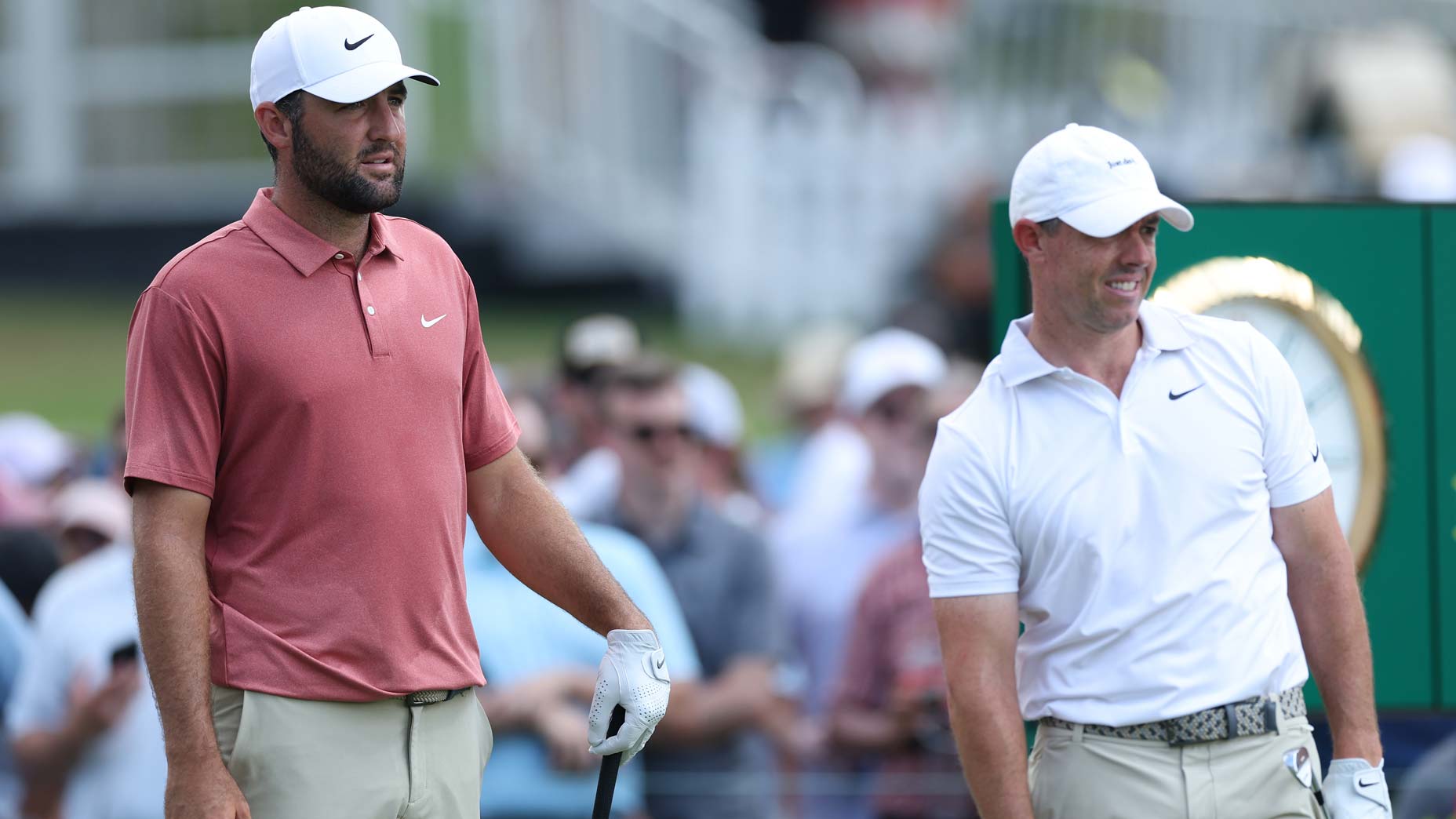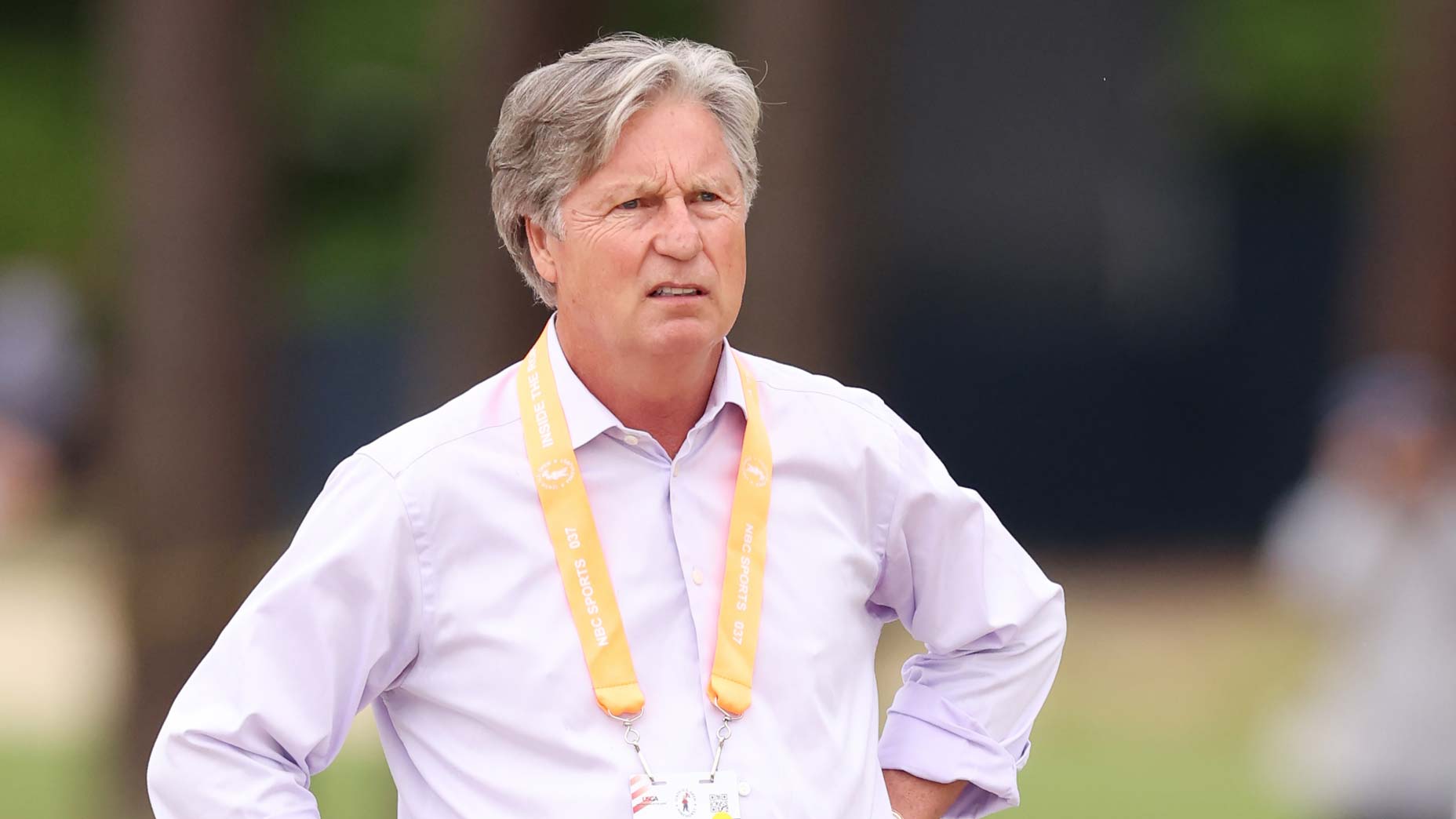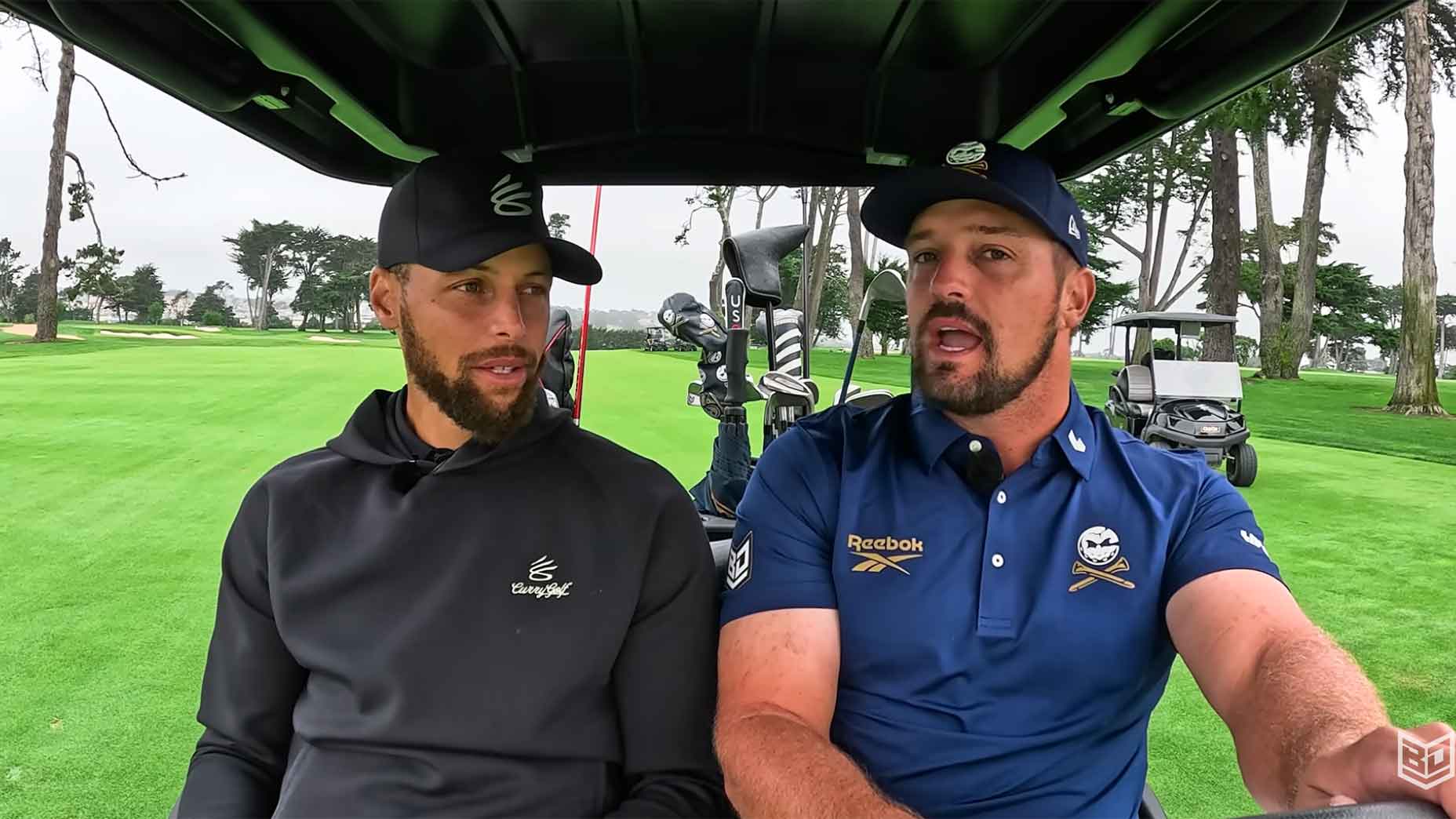LA JOLLA, Calif. — Charlie Howell is good at golf and also golf trivia, so you can imagine his frustration when he struggled with a I-should-get-this question shortly after signing for a Thursday 66 here at Torrey Pines:
What former Tiger Woods caddie was walking the course today outside the ropes?
“Can’t be Steve Williams,” Howell said. “I don’t think it’s Fluff.”
Howell tilted his head before gasping, “I don’t think I’m gonna get this.”
“Jay Brunza.”
“Jay Brunza! I should have gotten that,” Howell said. “I worked with Jay.”
Dr. Jay Brunza, a 75-year-old clinical psychologist and retired Navy officer, should probably be in the Caddie Hall of Fame, based on his work as Woods’s caddie as an amateur. Brunza came to carrying the bag because he was Woods’s mental coach, but he was right there beside the kid phenom when he won two of his three USGA boy’s titles and all three of his USGA men’s amateur titles. He also caddied for Woods when Woods played in one U.S. Open and two Masters as an amateur.
Along with Earl Woods (Tiger’s father) and Butch Harmon (Tiger’s swing coach), Brunza was an integral member of Team Tiger in its pre-Nike years. All three men were shaped immeasurably by their military service and their life lessons became Tiger’s life lessons. In his prime, Woods displayed Harmon’s macho strutting, Earl’s us-against-them mentality and Brunza’s cerebral self-analysis.
Brunza, who grew up in a Pennsylvania coal-mining town near Wilkes-Barre, has lived in Southern California for most of his adult life and is still active as a golf psychologist, though one with a decidedly modest profile. He does not write books or magazine columns. You seldom see him quoted and he has never discussed his work with Woods in detail. When Woods first turned pro in 1996, there were Tour players and caddies whispering about Brunza and Woods and their use of hypnosis.
“I tried it with him,” CH3 said on Thursday. Howell described sessions in which Brunza held a shiny metal ball on a chain in front of his patient’s eyes, as it went back and forth “like a metronome,” Howell said. “I was too Type A to ever fall into a trance. But I liked him. He’s a great guy.”
Howell worked with Brunza for about a year, and he can see Brunza’s influence on Woods every time Woods closes his eyes for a long, still second or two before playing a shot. That moment is often the calm before the storm.

Since Woods’s last major win, at the 2008 U.S. Open at Torrey Pines, analysis of Tiger’s changing swing and balky body parts have dominated the coverage of his golfing life. That’s surely how Woods prefers it. But Woods would never have been able to resume his place among the world’s best golfers, following his April 2017 spinal-fusion surgery and May 2017 roadside arrest, without a world-class mental game, too. Whatever Brunza gave Woods years ago surely survives today.
Woods was Brunza’s first prominent golf patient. Today, he works with different college golf teams on a consulting basis, including the University of Texas. That’s how he got to know Dylan Frittelli, the 28-year-old South African golfer of Italian descent who plays on the PGA Tour. Frittelli was on the Longhorns team that won the NCAA Championship in 2012, as was Jordan Spieth. On Thursday, on the North Course at Torrey Pines, Spieth, along with Justin Rose and Billy Horschel, went off at 9:40 a.m., local time. Hundreds of spectators followed them. Frittelli, with Jim Knous and John Chin, played in the next group. A dozen or so people followed them, Jay Brunza among them. Brunza has been helping Frittelli for about eight years. He is staying with Brunza this week.
On Thursday, Brunza walked with Ryan Donovan, a friend and the head coach of the San Diego State men’s golf team. Nothing about Brunza’s manner or appearance hinted at the remarkable history he has with one of the most accomplished athletes ever. He was wearing running shoes, baggy dungarees, a maroon sweater with a Callaway logo that you would not describe at the height of fashion. He made no effort to avoid eye contact with Frittelli, and he was rooting for his success with a certain restrained passion. He and the golfer are close. Answering questions from a reporter, Brunza was neither voluble nor circumspect. He was appropriate. He readily identified the various fighter jets that flew over the course.

Brunza is not active in Woods’s life today but it’s clear Brunza holds Woods in high esteem. It is impossible that any single sentence is going to summarize the relationship meaningfully. But that’s not why Brunza doesn’t speak of Woods publicly. He is silent because talking would violate an underlying ethic of his profession.
Brunza used a catchphrase of his practice — Relax, Review, Refocus — but it couldn’t possibly capture the complexity of his work. Asked how he felt about golfers who talk to their airborne shots, Brunza said, “That’s nothing but a help — a relaxation method under stress.” He said that when it was all said and done, the key to Woods’ greatness was his ability to stay calm in stressful situations.
Last year, Harold Varner asked Woods, “What do you do under pressure?” As Varner related the answer, Woods said, “You keep things simple and you don’t change a thing.” Hearing of that exchange, Brunza said that was an accurate summation of Woods’s mental approach. Brunza focuses on the importance of a consistent “pre-shot routine” in the pursuit of “peak performance.” After watching Frittelli back off a shot after a loud whistle, Brunza spoke of the importance of “letting everything go, all the distractions, before playing a shot.”
He speaks softly and slowly, with little inflection, but as you listen to him it’s hard not to imagine Woods playing some of the most famous and noisy shots of his career.
Frittelli, a two-time winner on the European tour, is tall, lean and athletic. He is also cerebral and analytical by nature. He is not excitable. You would never confuse him for Woods or Spieth. You might see shades of Justin Rose in him. Brunza said his starting point with his golfers is this: “You don’t work with what you have — you work with what they have.”
Frittelli’s day ended on the ninth hole of the North Course, a short par-5. Brunza offered a hint of body English to Frittelli’s errant tee shot — stress relief! — but still it finished in a patch of deep, damp rough, near a scrubby, annoying Torrey pine. When Frittelli hit a flat-out once-a-year duff for his second shot, Brunza sagged. Frittelli did not. He finished with a bogey for an even-par round of 72. By the end of the day he was in a tie for 98th place. If this brought him any stress at all, it was not noticeable in a casual, unrushed post-round interview.
“Coach brought in Jay for two days and said he was available to any of us on a consulting basis,” Frittelli said, referring to John Fields, his Longhorns coach. “I was surprised how few of the guys did, especially when you know about his connection to Tiger. Jay and I hit it right off. I presented a different kind of challenge for him. Most of the players he works with, Jay has to find a way to calm them down, to get them in their happy place. For me, it was more of a case of getting me up.”
In watching Jordan Spieth up-close, and watching Woods’s career unfold on TV, Frittelli could see their broad similarities in terms of extreme competitiveness and their ridiculous ability to make short putts under pressure. But Frittelli, who still lives in Austin, says he was never one to “idolize” any golfer, Spieth or Woods or anyone else. He said his work with Brunza was not an effort to unlock the secrets to Woods’s success, but to find what would work for him. Frittelli said that Brunza, as a Catholic and as a retired Navy officer, had an intractable devotion to order, which he found familiar and reassuring. Frittelli is surprised, and relieved, at how seldom anybody asks him about Brunza’s work with Woods. “I think they don’t know,” he said. Even with Frittelli, Brunza seldom brings up Woods’s name, and certainly doesn’t brag about the work he did with him.
Anyway, what Jay Brunza did with Tiger Woods is not what he’s doing with Dylan Frittelli. He knows first-hand Dr. Brunza’s first rule: you don’t work with what you have, but with what they have.
Michael Bamberger may be reached at Michael_Bamberger@golf.com







